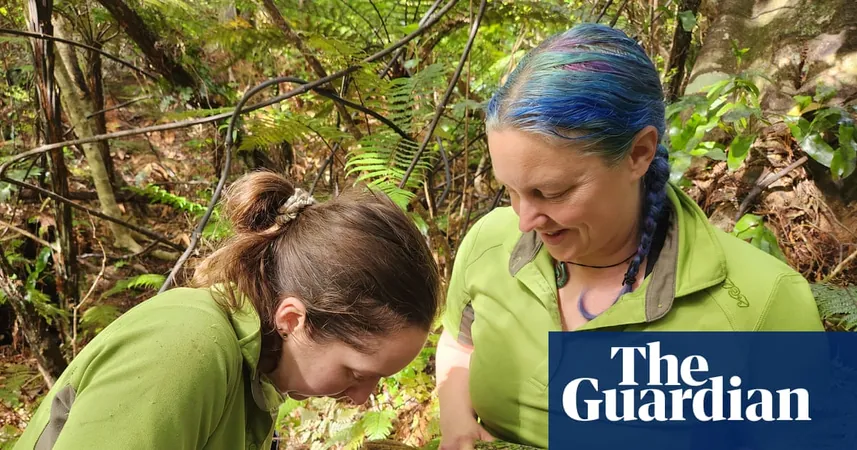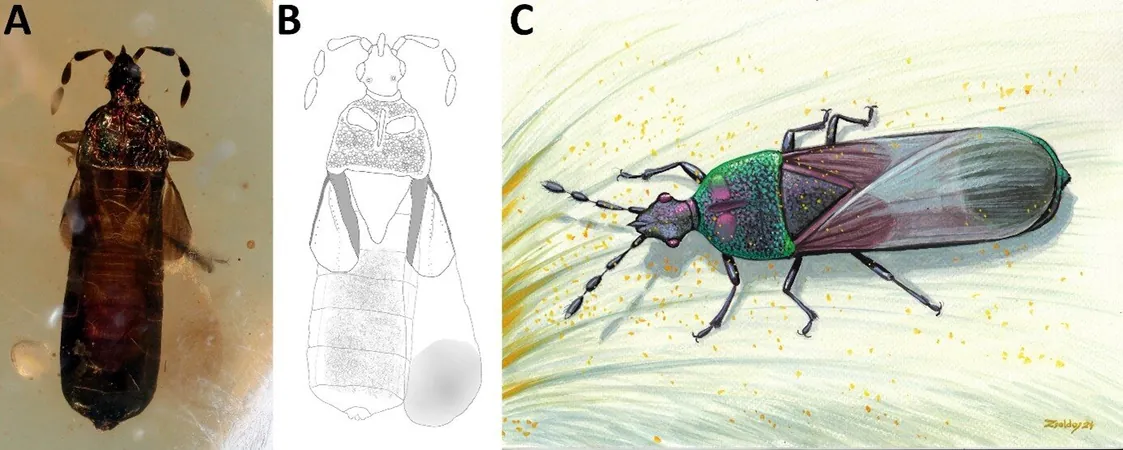
New Zealand's Urgent Quest to Save the World's Fattest Parrot from Avian Influenza
2025-09-02
Author: Jia
The Race Against Time for a Rare Parrot
Picture this: a weary petrel, navigating the vast Indian Ocean, makes landfall on New Zealand's remote Codfish Island, home to the world's heaviest parrot—the critically endangered kākāpō. This scenario, while seemingly innocuous, has alarming potential consequences.
If it coincides with the kākāpō breeding season, the male parrot might mistake the petrel for a mate, leading to an unintended tragedy. But the real danger lies not in this confusion; it stems from the petrel carrying H5 avian influenza, a virus that could quickly devastate the already fragile kākāpō population, which numbers fewer than 250 individuals.
Global Bird Flu Crisis Looms
Conservationists in New Zealand are acutely aware of this threat as they brace for the impending spring migration, a time when millions of birds can introduce new viruses. The highly pathogenic H5N1 strain of bird flu has already wreaked havoc worldwide, resulting in a concerning decline of bird populations.
Throughout Oceania, efforts to keep this virus at bay have proven successful so far, providing a critical window for New Zealand to bolster its defenses.
Innovative Vaccination Trials Lead the Way
In August, New Zealand's Department of Conservation revealed a groundbreaking achievement: the successful vaccination of its rare bird species against bird flu. This pioneering research could change the game in the fight against avian influenza, which has led to mass fatalities in wildlife across the globe.
Over the last year, the department has administered an H5N3 poultry vaccine to 10 captive birds from five critically endangered species, including the kākāpō and the takahē. Remarkably, four of these species generated a robust antibody response, lasting at least six months after receiving the vaccine.
Strategizing for the Future
According to Kate McInnes, a senior science adviser at the Department, this vaccination strategy could safeguard core breeding populations. Their next challenge is to devise a meticulous deployment plan before the spring migration. "You can’t just run around the forest and catch everything; it requires careful planning," she explains.
Australia's Vigilance
Down under, Australia is closely monitoring New Zealand's progress as it prepares for a potential influx of migratory birds. Facing a significant threat, the Australian government allocated A$100 million to combat bird flu, especially for protecting captive populations of threatened species.
Fiona Fraser, Australia's commissioner for threatened species, underscores the urgency. "It’s not a matter of if, but when bird flu arrives here,” she warns, pointing out the increasing vulnerability of animals like the native Australian sea lion and the endangered Tasmanian devil.
Challenges Ahead: The Vaccination Debate
Despite these advancements, the vaccination of wild populations is fraught with challenges. Experts have raised concerns about the logistics and potential ramifications of vaccinating wildlife, including the risk of creating new viral strains. While countries like the U.S. have made strides in vaccinating species like the California condor against H5 avian influenza, the issue remains complex.
New Zealand's wildlife authorities face a crucial decision: timing their vaccination efforts based on when the virus is expected to arrive. McInnes emphasizes the delicate balance: "If we start too early, the antibody may wane, but starting too late could be disastrous."
A Hopeful Future for Endangered Species
As New Zealand navigates this precarious situation, the lessons learned from vaccine trials and wildlife conservation efforts could serve as a beacon of hope, not just for the kākāpō but for endangered species worldwide. Their remarkable journey to protect their unique avifauna could resonate far beyond their shores, illustrating the critical need for global collaboration in the face of mounting wildlife threats.




 Brasil (PT)
Brasil (PT)
 Canada (EN)
Canada (EN)
 Chile (ES)
Chile (ES)
 Česko (CS)
Česko (CS)
 대한민국 (KO)
대한민국 (KO)
 España (ES)
España (ES)
 France (FR)
France (FR)
 Hong Kong (EN)
Hong Kong (EN)
 Italia (IT)
Italia (IT)
 日本 (JA)
日本 (JA)
 Magyarország (HU)
Magyarország (HU)
 Norge (NO)
Norge (NO)
 Polska (PL)
Polska (PL)
 Schweiz (DE)
Schweiz (DE)
 Singapore (EN)
Singapore (EN)
 Sverige (SV)
Sverige (SV)
 Suomi (FI)
Suomi (FI)
 Türkiye (TR)
Türkiye (TR)
 الإمارات العربية المتحدة (AR)
الإمارات العربية المتحدة (AR)